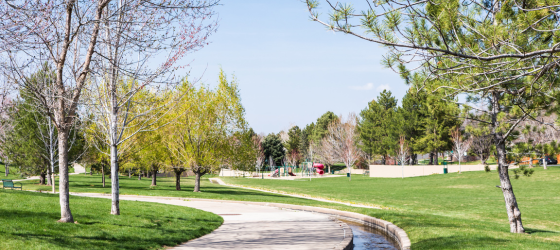$1.5 billion In Grant Funding AVAILABLE for urban forestry projects!
The Urban and Community Forestry Program (UCFP) aims to restore, sustain and maintain urban and community forest lands to establish thriving ecosystems and create greater social and economic benefits for various communities across the United States.
The Forest Service makes up to $1 billion available in Urban and Community Forestry competitive grants for investments that:
- Increase equitable access to the urban tree canopy and associated human health, environmental and economic benefits in disadvantaged communities
- Broaden community engagement in local urban forest planning
- Improve community and urban forest resilience to climate change, pests and storm events through best management and maintenance practices
Funding Overview
Estimated Funding
The USDA Forest Service may provide up to $1 Billion for Urban and Community Forestry investments through this opportunity (based on the availability of funding, the quality of applications received, agency priorities, and other applicable considerations).
Amount of Awards
The USDA Forest Service welcomes proposals spanning a broad range of costs from eligible entities working at a community, regional and national scale. The minimum Federal funding amount for projects is $100,000. The maximum Federal funding limit is $50,000,000.
All federal grant funds are to be matched at least equally (dollar for dollar) with non-federal match. Match-waivers are available for proposals that deliver 100% of the funding/program benefits to disadvantaged communities.
Eligible Applicants
- State government entity
- Local government entity
- Agency or governmental entity of the District of Columbia
- Agency or governmental entity of an insular area (as defined in section 1404 of the National Agricultural Research, Extension, and Teaching Policy Act of 1977 (7 U.S.C. 3103)
- Federally Recognized Tribes, Alaska Native Corporations/villages, and Tribal organizations as defined in 25 USC 5304 (l) and operating within the United States, or its territories
- Non-profit organizations
- Public and State-controlled institutions of higher education
- Community-Based Organization
Eligible Activities
- Foster individuals, groups, and organizations in the communities served to become engaged participants in urban forest planning, planting, and management, especially those in disadvantaged communities that do not have adequate resources to install or maintain green infrastructure or are underrepresented.
- Protect, enhance, and expand equitable urban tree canopy cover to maximize community access to human health, social, ecological, and economic benefits, particularly in disadvantaged and nature-deprived communities experiencing low tree canopy cover, extreme heat and frequent flooding. Improve and increase access to parks and nature in communities.
- Encourage long-term urban forest planning, assessment, and management.
- Encourage proactive and systematic maintenance and monitoring of urban trees and forested natural areas to improve forest health; assess risk to forests from pests, disease, and adverse climate impacts; and formulate adaptive management strategies to improve forest resilience.
- Advance the use of tree and forest inventories, monitoring, and assessment tools in priority areas, including monitoring and measurement of extreme heat.
- Improve preparation for severe storms and the recovery of damaged or deteriorated landscapes to more healthy and resilient conditions.
- Protect, enhance and increase access to watersheds in urban and developing areas with a focus on conserving and managing forest patches, and green stormwater infrastructure.
- Provide paid training experiences for urban forestry crews to establish and maintain urban forests into the future. Support youth employment opportunities, including workforce development and training for the creation and maintenance of green jobs
and economic opportunities for planning, planting, and sustainably maintaining trees and forests, including training and retaining urban arborists, and producing and using urban forest products.
- Develop paid on-the-job training opportunities, including pre-apprenticeships and apprenticeships, to expand workforce development pathways for green careers in urban and community forestry.
- Address exotic invasive pest species that adversely impact urban forests.
- Work across jurisdictional boundaries, leveraging ideas and resources to increase capacity to provide equitable access to benefits across the larger landscape and at a greater geographic scale.
- Aid in planning, goal setting, and skill sharing with other professionals such as urban planners, engineers, educators, recreational and public health officials.
Deadline
